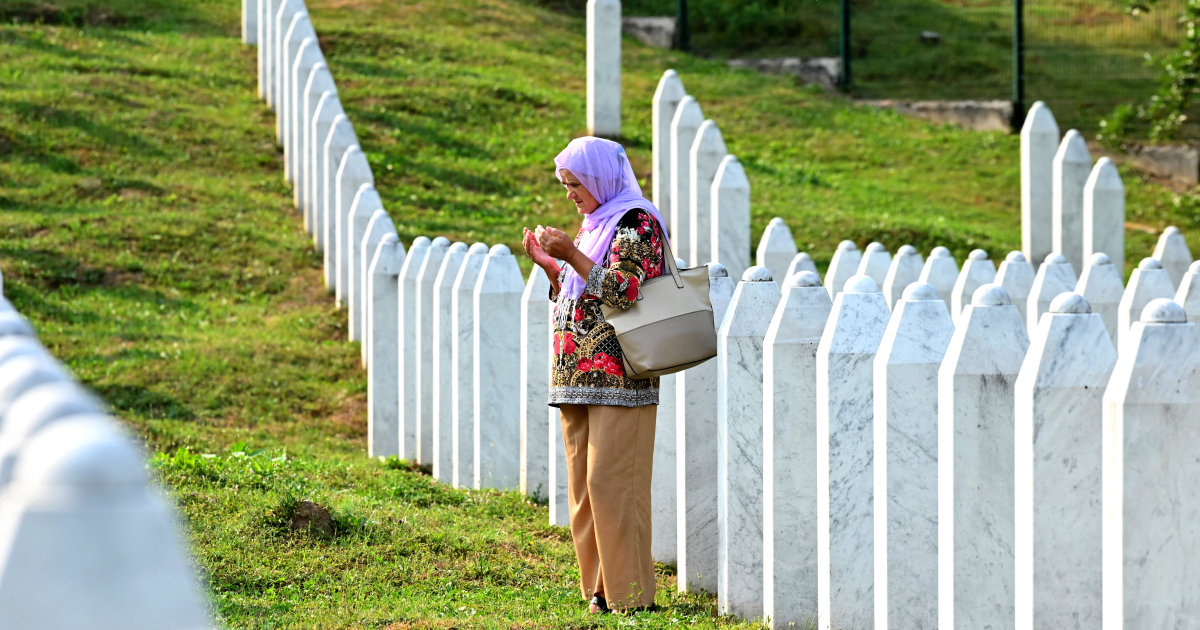Nineteen newly identified victims buried in a ceremony marking the killing of more than 8,000 Muslim Bosnians by Serb forces.
Thousands of people in Bosnia and Herzegovina have gathered to commemorate the 1995 Srebrenica massacre, Europe’s only acknowledged genocide since World War II, and bury 19 newly identified victims.
The execution by Serbian forces of more than 8,000 Muslim Bosniaks, most of them men and boys, is being commemorated in a series of events on Sunday, followed by the reburial of victims whose remains were found in mass graves and recently identified through DNA analysis.
Twenty-six years after they were murdered, 16 men, two teenage boys and a woman will be laid to rest at a memorial cemetery at the entrance to the eastern town, joining more than 6,600 other massacre victims already reburied there.
Newly identified victims are given a dignified burial each year on July 11 — the anniversary of the day the killing began in 1995.
“As soon as I got up and had coffee, I came to visit the graves of my husband and his brother, to say a prayer,” Kadefa Rizvanovic, who lost 20 male relatives in the slaughter and still has not found the remains of all of them, told The Associated Press news agency.
“My paternal and maternal uncles are also buried here. I said a prayer for them and for all the victims of Srebrenica,” she added.
Al Jazeera’s Tarik Durmisevic, reporting from Srebrenica, said approximately 6,700 victims have been buried at the memorial cemetery.
“Around 1,000 [more] partial remains have been identified, but families of the victims are reluctant to bury them as they hope to find more remains,” he said, adding that another approximately 1,000 victims were still considered missing.
Most of the massacre victims were hunted down and summarily executed as they tried to flee into nearby forest after Srebrenica was overrun by Bosnian Serbian forces on July 11, 1995, in the waning days of Bosnia’s 1992-95 fratricidal war.
Their bodies were ploughed into hastily dug mass graves and then later excavated with bulldozers and scattered among other burial sites to hide evidence of the crimes.
The Srebrenica killings were the bloody crescendo of the war which pitted the country’s three main ethnic factions – Serbians, Croatians and Bosnians – against each other after the break-up of Yugoslavia.
More than 100,000 people were killed in the conflict before a peace deal was brokered in 1995.
